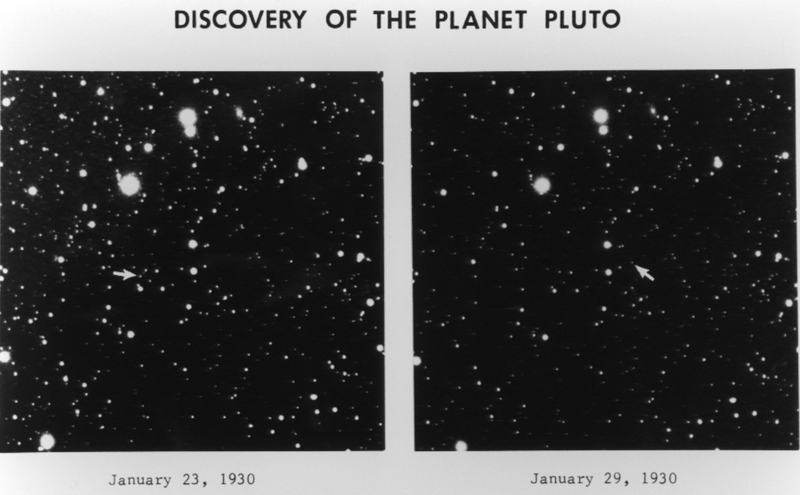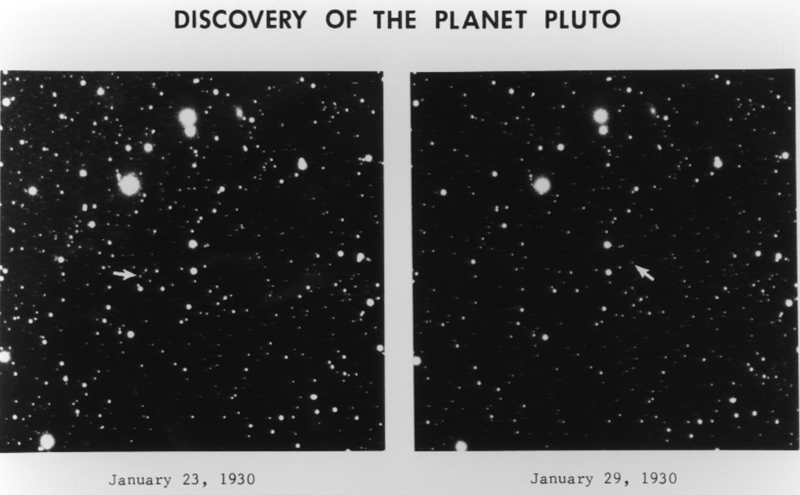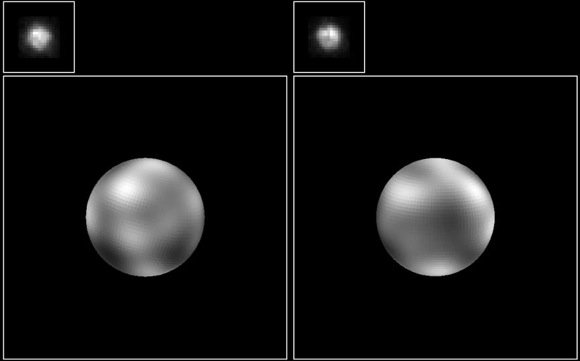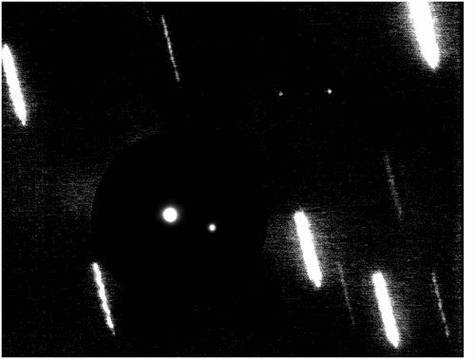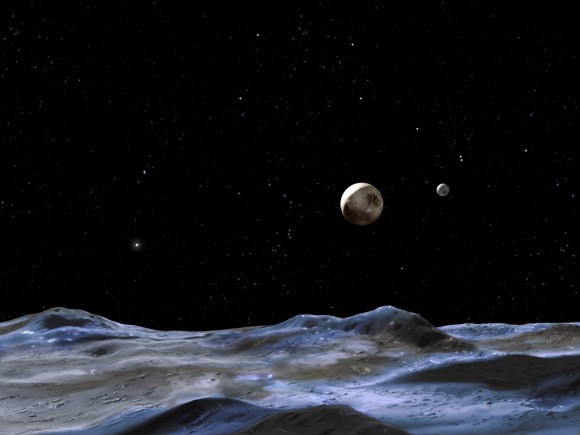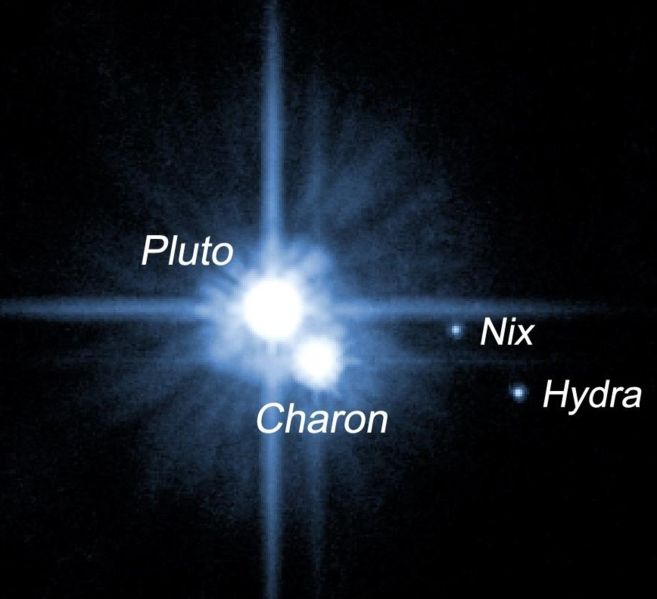No longer a planet, Pluto is just a member of the Kuiper Belt; a collection of icy objects that extend out past the orbit of Neptune. If you brought Pluto into the inner Solar System, it would start to act like a comet – blasting out gas and particles from the solar wind. It’s a good thing Pluto is in the cold, dark outer Solar System, far away from the Sun.
So, if it would act like a comet, what is Pluto built of, and how do we even know? Pluto is so small and dim that only the largest telescopes can see it. To even see with your own eyes, you want a 30 cm (12 inch) telescope – and then you’ll only see a dot.
Astronomers using the world’s biggest telescopes, including the Hubble Space Telescope see a much better view. By using a technique called spectroscopy, astronomers can analyze the details about Pluto’s surface. The current thinking is that it’s composed of more than 98% nitrogen ice, with traces of methane and carbon monoxide.
The limits of telescope technology mean that we can’t get a better view of Pluto’s surface. But NASA’s New Horizons spacecraft is making the journey to Pluto, and will make a flyby in 2015. At that point, it will fly within 10,000 km of Pluto’s surface and send back images that show features as small as 1.6 km across. This will be a tremendous improvement over our current understanding of Pluto.
But what’s inside?
Planetary scientists have calculated Pluto’s density at between 1.8 and 2.1 g/cm3. From this density, they have calculated that its interior is probably 50-70% rock and 30-50% ice. Decaying radioactive elements inside Pluto would heat the interior of the dwarf planet, allowing the rock and ice to move around. At this point, the interior of Pluto is probably a rocky core surrounded by a shell of ice. If the radioactive elements are still decaying today, they could heat Pluto up enough that it has an interior liquid ocean, like Jupiter’s moon Europa.
The surface of Pluto is a thin layer of nitrogen, methane and carbon monoxide. When Pluto is at its closest to the Sun, this material evaporates, and forms an atmosphere around the dwarf planet. And then, when it’s further from the Sun, and cooler, this atmosphere freezes back down onto the surface.
Here are some nice Pluto images.
Source: NASA


